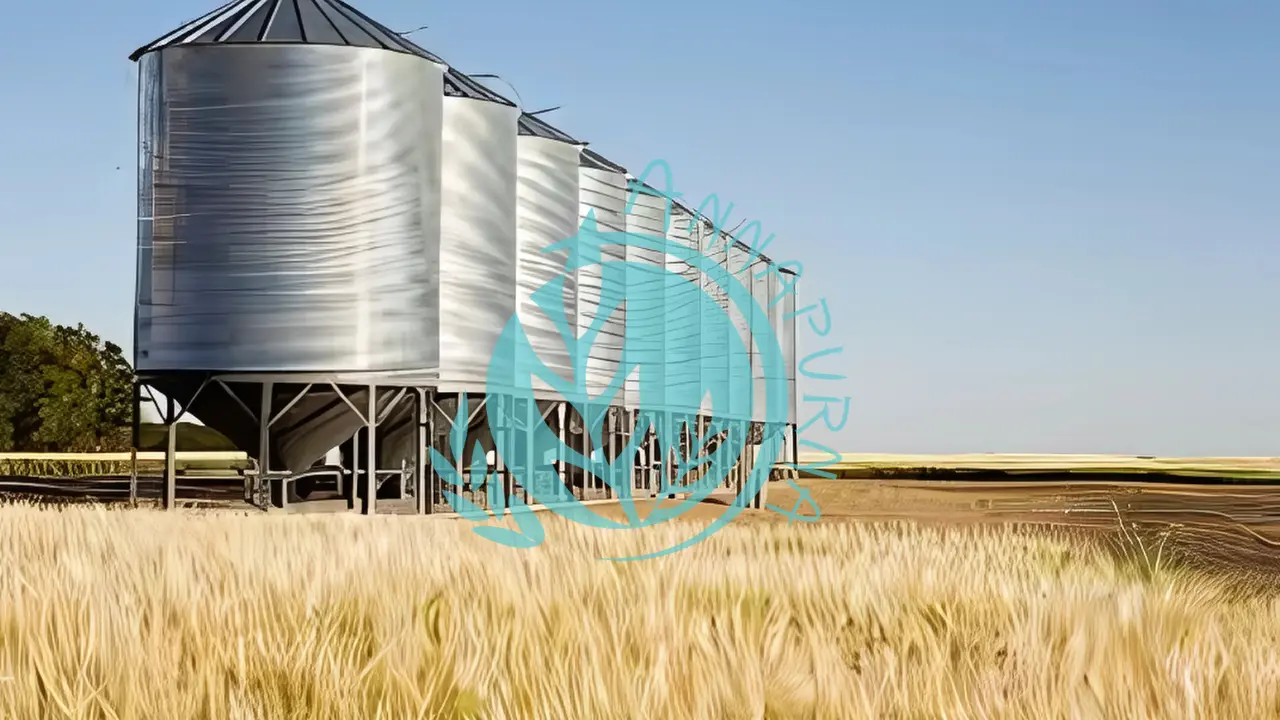Agricultural silos play an essential role in modern farming by providing efficient storage solutions for grains, seeds, and other agricultural products. There are different types of agricultural silos like tower silos, silo bags, bunker silos, etc. Agriculture silos manufacturers design these silos to meet the different farm needs, optimising space and maintaining crop quality. Each of the silos has unique advantages like increasing capacity, minimizing storage losses, flexibility, and cost-effectiveness. Selecting the right type of silo is crucial to maintaining product quality, reducing spoilage, and optimizing storage capacity. In this blog, we will discuss the different types of agricultural silos and help you determine which one is best suited for your farming needs.
Read More: Grain Farming Process: From the Field to the Bin to Planning Next Year’s Season
What are Agricultural Silos?
Agricultural silos are large structures that store bulk materials like grain, silage, and other farm produce. They help farmers preserve their crops and manage their harvests.
How do silos help farmers?
- Silos protect crops from pests, weather, and spoilage.
- Silos extend the shelf life of crops, which helps farmers manage their harvests.
- Silos help farmers provide a consistent supply of feed for livestock throughout the year.
- Silos can store large quantities of grain in a small area.
What are the Types of Silos?
Silos are used for efficient storage for various bulk products. Below we have mentioned some of the popular types:
Types of Agricultural Silos
There are several types of agricultural silos, each designed for specific storage requirements. The main types include:
- Tower Silos: Tower silos are one of the most commonly used structures for grain storage. These vertical silos are made from materials like concrete, steel, or fiberglass and can store large quantities of grains.
- Bunker Silos: Bunker silos are horizontal storage structures built from concrete walls and covered with plastic sheets to protect the stored materials. They are mainly used for silage storage.
- Bag Silos: Bag silos consist of long, airtight plastic bags filled with grain or silage. They offer a flexible and economical solution for temporary or seasonal storage.
- Hopper Bottom Silos: Hopper bottom silos feature a conical base that facilitates efficient grain unloading. These silos are commonly made from galvanized steel and are ideal for handling free-flowing grains.
- Flat Bottom Silos: Flat bottom silos are large cylindrical storage units designed for long-term grain storage. These silos are often equipped with aeration systems to maintain grain quality.
- Trench silos: These silos are dug into the ground below ground level and have concrete or wooden walls.
- Stack silos: These silos are a piling system with no structural walls.
- Metal Silos: Metal silos are widely used in agriculture for storing bulk agricultural products like grains and feed. Their robust construction helps keep the contents safe and fresh, making them a favorite among farmers.
- Bin Silos: A bin silo refers to a large, cylindrical storage structure used to hold bulk materials like grains, coal, or cement in large quantities for long periods, essentially a large, specialized bin designed for bulk storage, often seen on farms or industrial sites; the term silo emphasizes the large capacity and long-term storage aspect while bin indicates the container itself.
- Concrete Silos: A concrete silo is a storage container made of concrete that’s used to store and distribute cement, grains, coal, and other materials. Concrete silos are sturdy, durable, and resistant to fire, earthquakes, and wind.
- Wooden Silos: Wooden silos are structures made of wood that are used to store crops and other materials in bulk. They are the oldest type of silo and were commonly used on farms and in granaries.
- Temporary Silos: A temporary silo refers to a storage structure designed for short-term holding of bulk materials, like grains or other agricultural products, typically used during harvest season when permanent storage capacity is limited; these silos are often portable, easy to set up, and can be readily dismantled when not needed, with common examples being inflatable silos or large grain bags used on farms.
Factors to Consider When Choosing an Agricultural Silo
When selecting the right silo for your farming needs, consider the following factors:
- Storage Capacity: Determine how much grain or silage you need to store at any given time.
- Material Durability: Choose silos made from strong, corrosion-resistant materials like galvanized steel or reinforced concrete.
- Cost and Budget: Consider your investment capacity and compare the costs of different silo options.
- Ease of Maintenance: Opt for silos with features that reduce cleaning and maintenance efforts.
- Weather Resistance: Ensure the silo provides adequate protection against moisture, pests, and environmental damage.
- Loading and Unloading Efficiency: Choose a design that simplifies grain handling operations.
Choose Best Agricultural Silo in India
Choosing the right agricultural silo is a very important step to ensure the quality and safety of your stored products. By understanding the different types of silos and considering your specific needs, you can make a well-informed choice that supports your farming activities.
If you need a tower silo for long-term grain storage, a bunker silo for silage, or a hopper-bottom silo for quick unloading, choosing the right one will enhance efficiency and profitability. Annapurna Agronics Machinery Pvt. Ltd. offers a wide range of high-quality silos to meet diverse agricultural needs. Contact us today to find the best silo solution for your farm!

